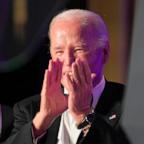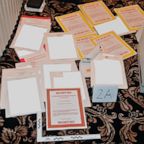The Black history that isn't taught: Historians share lesser known moments in US racial history
February is Black History Month.
The deadly voting rights campaign known as Freedom Summer, the successful Black labor rights movement during the Great Depression, and the long fight for desegregation in schools are among the many lesser-known stories that help shape our understanding of U.S. Black History.
Black history in the classroom has become a source of contention in K-12 schools, colleges and universities across the country.
Several laws have been implemented in recent years that restrict certain lessons on race in classrooms in Florida, Oklahoma, Texas, and others. This has impacted what books can be made available in some school libraries, has led some schools to reject AP African American history classes, and has put some teachers on edge about what they can speak about.
Historians interviewed by ABC News argue that these restrictions will limit the information taught about racial history in the United States.
In a 2022 Quinnipiac University poll, only 27 percent of Americans said the American History they were taught in school reflected a full and accurate account of the role of African Americans in the United States, while 66 percent said what they were taught in school fell short on that.
For Black History Month, ABC News asked historians and museum curators about events and movements in Black history they say reflect upon the current issues facing the U.S.
"We're fighting to ensure that the most accurate interpretation, the most factual, empirical analysis of our experience is made available to our people and to the world," said Sundiata Cha-Jua, an associate professor of history at the University of Illinois at Urbana-Champaign.
Freedom Summer
The fight for voting rights was a dangerous and sometimes fatal fight for activists.
In 1964, activists attempted to register as many Black voters as possible in Mississippi in what is known as Freedom Summer or the Mississippi Summer Project. The National Archives recorded that more than 60 churches and homes were bombed or burned, four civil rights workers were killed, at least three Black Mississippians were killed, 80 workers were beaten and more than 1,000 people were arrested in connection with the effort.
Several civil rights organizations collaborated to send thousands of out-of-state volunteers -- "young people, the children of prominent lawyers, doctors, politicians in the North" -- to help Black Mississippians safely register to vote, according to Cornelius L. Bynum, the director of African American Studies at Purdue University.
The belief in doing this was that "local Mississippi authorities might be more hesitant to respond with violence than they had been" and that there would be more media focus on the efforts to generate an effective vote for African-Americans in the state," Bynum told ABC News.

Tens of thousands of Black voters registered, dispelling the myth that Black residents simply weren't interested in voting, according to Bynum.
These registrants would form the Mississippi Freedom Democratic Party and elect their own slate of delegates to be sent to the Democratic National Convention in 1964 in competition with the all-white Mississippi Democratic delegation "that essentially barred African Americans from participation," Bynum said.
This effort was in part led by civil rights activist Fannie Lou Hamer, who pleaded with the DNC for recognition of the MFDP. In her broadcasted speech, she detailed the challenges faced by Black residents like herself when trying to register to vote.

She described literacy tests, fines, gun violence, threats: "Now, the question I raise: Is this America, the land of the free and the home of the brave? Where people are being murdered, lynched, and killed, because we want to register and vote?" she said, according to a transcript of the speech by the University of Maryland.
Though MFDP did not get the recognition civil rights activists fought for, the fight for voting rights paved the way for the Civil Rights Act and the Voting Rights Act in the months that followed.
Bynum argues that this event is a precursor to understanding the ongoing fights over voting restrictions.
"These are sort of historical lessons of the civil rights movement that go undiscussed, but in doing so, as a collective society, we lack the insight to really recognize just how insidiously dangerous it is to passively watch these restrictions be placed on the right to vote in North Carolina, in Alabama, and in other places," said Bynum.
He said learning about these events can "anchor our sense of awareness and our kind of moral conscience and a space to be able to clearly identify when real threats to democracy, real threats to our liberties and freedoms are perpetrated against us."
“Don’t Buy Where You Can’t Work”
Black workers have long been a powerful force in the labor rights movement, according to Cha-Jua.
In the 1930s, cities across the country were faced with boycotts and picketing against white storeowners who refused to employ Black workers, especially in predominantly Black communities.

"In addition to the number of jobs created during the Depression ... [this] campaign galvanizes the Black community across class, and across ideological, political, strategic and tactical lines," said Cha-Jua.
This movement has been dubbed “Don’t Buy Where You Can’t Work." However, in some states, boycotters put a positive spin on the protests -- urging protesters to instead "buy where you can work," said Cha-Jua, an executive council member of ASALH.
These boycotts are credited with creating tens of thousands of jobs for Black workers amid the Great Depression.
A landmark Supreme Court decision came from this movement -- New Negro Alliance v. Sanitary Grocery Co. -- ruling that peaceful protests over labor disputes do not violate the law, according to the Free Speech Center at the Middle Tennessee State University.
The boycott's success and the Supreme Court decision laid the foundation for the boycotts and protests of the 1950s and 1960s during the Civil Rights Movement, Cha-Jua said.

Roberts v. City of Boston
The fight against segregation in the court system was decades in the making before the famous Brown vs. Board of Education case that would desegregate schools.
Abiel Smith School in Boston was the first public school in Boston built for Black students in 1835. According to the Museum of African American History in Boston, the school fell into disrepair through the years and the Black community petitioned the Boston Primary School Committee for years to desegregate primary and grammar schools in the region.
The committee urged residents to take the case to court -- and they did. In 1847, a local resident named Benjamin Roberts sued the city of Boston because his daughter had to pass five schools for white children on her way to the Abiel Smith School and she was rejected from the closest school near their home.
The judge in the case decided that the committee "had the power to designate schools for children to attend," according to the Museum of African American History. The judge supported school segregation in his decision, setting the basis for the "separate, but equal" argument that would be used in later cases such as Plessy v. Ferguson in 1896 which would further affirm the believed constitutionality of racial segregation, the museum reported.
It wasn't until 1954 -- almost 100 years later and only about 70 years in the past -- that segregation in schools would be ruled unconstitutional.

Black history education is all around
Historians across the board spoke to ABC News about the importance of Black spaces such as schools and churches that served as places where the community both taught and learned.
Noelle Trent, CEO of the Museum of African American History in Boston & Nantucket, told ABC News that these community-led spaces are often forgotten, despite the role they played in creating cultural and educational experiences.
"You have this little ecosystem in which you are being taught," said Vedet Coleman-Robinson, executive director of the Association of African American Museums. "There are no restrictions, and you are to go out and be this amazing pillar of the community, but then you're also to come back and lift as you climb."
These spaces, though lesser known, are vital to understanding the not-so-distant racial history through the places in which Black residents sought out community, historians say. And they may be closer to you than you realize.
"American memory is very short," said Coleman-Robinson. Coleman-Robinson and Trent urge people to reflect on how many generations ago these events occurred, and how they reflect on the current moment.
"Our institution, like a lot of African American museums, is faced with a challenge .... there is pushback against showing primary sources, discussing these aspects of Black history, especially around slavery and the Civil War, that we find ourselves in a very precarious position," Trent said. "There is a need to speak truth to power to also be rooted in research."




